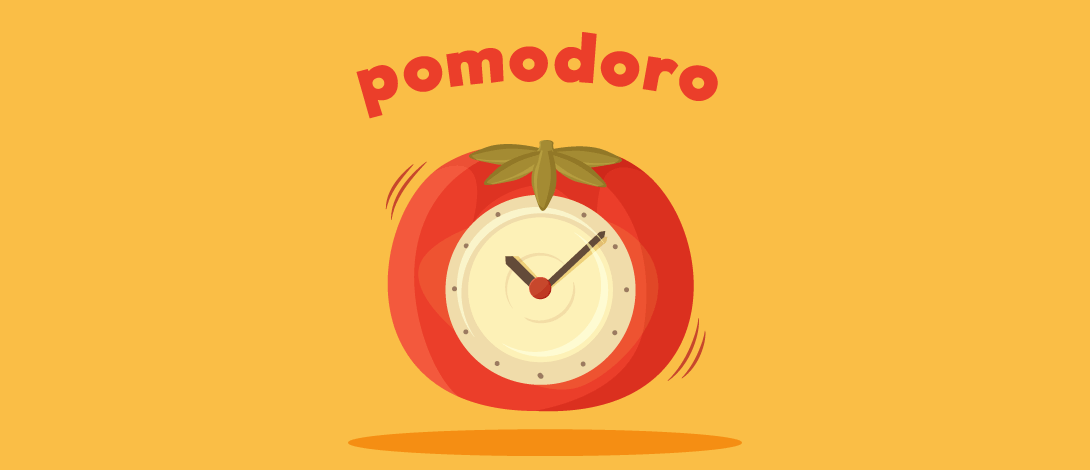The Study Technique That Made College Much Easier For Me
Throughout my college years, a fairly big chunk of my time was spent studying, and being a bit of a productivity freak, I tried an array of study hacks to increase my study efficiency and get more done. Some of the hacks didn’t offer much value and didn’t stick with me. However, out of the ones that did stick was certainly the Pomodoro Technique which has been an integral part of my study routine since roughly my second year of pharmacy school.

What is the Pomodoro Technique?
The technique simply entails deciding on a task to do, setting a timer for 25 minutes, and then doing only that task for those 25 minutes. When the timer goes off, you take a 5-minute break and then repeat the process. Sounds very simple? It is!
Why does it work?
Although there is research showing the benefits of the Pomodoro Technique, I would stick to my own personal experience instead.
It made blocking distractions easier. The thought of having a predefined time interval made blocking unwanted distractions much easier because mentally, I knew I needed to uphold my willpower for just 25 minutes.
It increased the quality of my studying. Again, knowing that I only have to study for 25 minutes at a time made me focus on the task at hand drastically better than studying for an open-ended period of time. Also, pushing through the last minutes of intervals is much easier than pushing against an indefinite amount of time. That way, I would get more done in a shorter amount of time.
It allowed me to objectively rate the successfulness of my study day. For example, 10 pomodoros a day was my benchmark. If I managed to finish 10 quality pomodoros in a day then I knew this was a pretty decent study day. In the pre-Pomodoro days, I would maybe sit and study 3 to 4 hours a day and feel very satisfied with myself while the “actual” quality study time was much less. By the way, 2.5 hours of studying might not seem much, but believe me, "pure" 2.5 hours of studying are A LOT.
It allowed me to plan studying in terms of time rather than quantity. Since I started using the Pomodoro Technique, I stopped saying, "Today, I will study X number of chapters/lectures." Instead, I would say, "Today, I will study X number of pomodoros." This relieved the pressure of having to finish a definite number of lectures in single sitting and, coincidentally, allowed me to go through more material. This came in really handy during finals!
It allowed me to schedule my days in a better way. Depending on what I had on my plate for each day, I would set the number of pomodoros I needed to study. Some days, it would be 10, some none. For example, knowing beforehand that I need to study 6 pomodoros a day means that I have to set aside around 4 hours for this which offered me more control over my own schedule.
Extra Tips:
Personally, I have been using an app called Productivity Challenge Timer to keep track of how much time I was spending on each task (or subject). It’s available on both Android and iOS. There are numerous other lightweight timer apps as well. By the way, here is a peak of my recorded study times for my 7th semester showing the app's interface.

I always kept a piece of paper beside me or an empty Google Docs note opened on my laptop. If anything popped up in my mind during my 25-minute session, like something I should do or just a random thought, I would write it down and then continue studying. This cleared my mind and allowed me to let go of the thought because I know it won’t be lost. I could always get back to it later.
During my last 2 semesters, I used a variation of the Pomodoro Technique where I would study for 52 minutes and then take a 17-minute break. The numbers seem pretty random but I read somewhere that this composition is optimal for maximum productivity. And to be honest, it worked pretty well. I would use this in the morning when I still felt fresh and then as the day progressed, I would switch to the usual Pomodoro composition as my willpower reserves dwindled.
Take Away:
The Pomodoro Technique has been a game-changer for me. As soon as I integrated it into my study routine, it instantly upped my productivity and made me a more efficient student. However, it might not work for everyone. Some people might find it a bit constraining, and for some domains, like the arts, it might stifle creativity as it may impede the artistic flow state. Anyway, you might want to give it a try and judge for yourself.
If you think that this article might offer value for you or someone else, please don't hesitate to share it.
 Ahmed El-Bahrawy
Ahmed El-Bahrawy